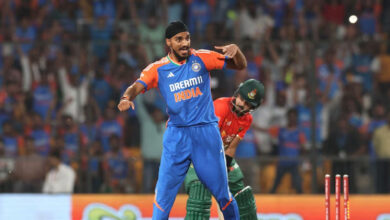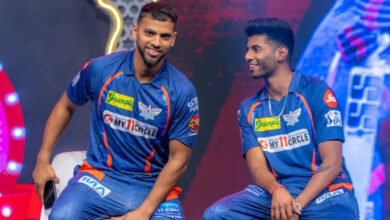How the famous yellow football jersey of Brazil was politicised. If you are wearing the iconic Canarinho jersey, are you far-right?

Towards the end of September, with elections looming in Brazil, President Jair Bolsonaro pulled off a coup. Brazilian football skipper Neymar jr., appearing in a tik tok video, lip-synced the far-right leader’s campaign jingle and also flashed ‘two’ and ‘two’ with the fingers of his hands – the ballot number of the incumbent. The consolation for the opposition – supporters of the left-leaning Workers’ Party helmed former president Luiz Inacio Lula da Silva – was that Neymar wasn’t wearing the famous yellow and green jersey of the national team. Since Bolsonaro came to power in 2018, the Liberal Party has appropriated the jersey. So much so that wearing it in public is seen as support for Bolsonaro.
***
When the new kit for the World Cup was launched in August, the blue-away jersey sold out in minutes according to reports, while the iconic Canarinho was still available. Back then it was seen as an indication of Lula da Silva nosing ahead in the presidential race. However, the October 2 polls didn’t result in a decisive mandate and Brazilians will have to vote again. “We are going to win these elections, this for us is simply extra time,” Lula said using a football analogy. The yellow and green jersey has united the 200 million Brazilians but not anymore.
In 2016, during the rallies in the country calling for the impeachment of then president Dilma Rousseff, a left-wing activ and member of the Workers’ Party, a majority of the protesters wore the Brazilian jersey. Once Bolsonaro came to power, his loyals have worn the Canarinho to express their support, while the yellow and green Brazil flags have been displayed from balconies and windows as a show of support. Bolsonaro left no stone unturned in using the famous shirt to build his connect with football and his brand of politics. When he visited then US President Donald Trump in 2019, Bolsonaro handed him a Brazilian jersey. So divided has the nation been that during the 2018 World Cup, left-wing supporters wore red jerseys to dance themselves from the ruling party. Bolsonaro is facing flak for mishandling of the Covid pandemic and the degradation of the Amazon forest cover but early results show he is still popular.
Neymar hit back at critics, posting on Twitter: “They talk about democracy and a lot of things but when someone has a different opinion they are attacked the very people who talk about democracy.”
***
There are two schools of thought from those opposed to Bolsonaro – try to reclaim the Brazilian colours from the far-right or to return to the white shirts with blue collars and white shorts that the Brazilian team used till 1950. The 1-2 loss to Uruguay in the final of the 1950 World Cup at the Maracana resulted in national mourning and a call to change the colours, because it was believed white and blue brought back luck. Three years later the newspaper Correio da Manha started a competition for the design of the new team kit. The only rule was that the colours to be used were of the Brazilian flag – yellow, blue, green and white.
Of the 400-odd entries, the one Aldyr Garcia Schlee, a newspaper illustrator, was picked. Schlee had submitted a sketch of a yellow jersey with a green collar and white socks. Brazilian players wore this kit in the 1954 World Cup in Switzerland and though they were knocked out in the quarterfinals, they won back-to-back titles in 1958 and 1962.
The BBC reported that Lula’s star supporters have worn the Brazilian jersey to win back the colours. Singer Ludmilla performed in a jersey during a recent concert and asked fans to make the ‘L’ sign. Rapper Djonga during a concert said that wearing the jersey was a sign an ‘act of protest’
“They (Bolsonaro supporters) think everything is theirs, they appropriate the meaning of family, they appropriate our national anthem, they appropriate everything,” he said. “But here’s the truth: everything is ours, nothing is theirs,” Djonga said according to the BBC.
***
This is not the first time politics and football have been intertwined in Brazil. During the military dictatorship which lasted from 1964 to 1985, football was used rulers to showcase the progress of the nation. When Brazil won the 1970 World Cup, Emílio Médici, the military leader, tapped into the victory and turned it into a public relations exercise. Players were felicitated and given hefty cash awards Médici. After the team’s failure to defend the title in 1974, Médici’s successor Ernesto Geisel decided that the free-flowing joga bonito had to be ditched in favour of a more physical style and named Claudio Coutinho, a former army captain as coach. But a third-place finish in 1978 put paid to the plans of Geisel and Coutinho. It took a few years for the national team to rediscover their fluid football.
Around this time,football in Brazil found a voice in Sócrates, when the great Brazilian midfielder and doctor, campaigned for democracy in the early 1980s. When he played for Corinthians, he started the Corinthians Democracy, a player based campaign against the high-handed way the club was run. Players gained the right to vote for all decisions, including against the practice of players having to stay in isolated rooms a day before a game. Corinthians players also wore printed messages on their back urging people to vote in elections and calling for a return to democracy.







